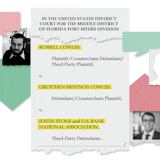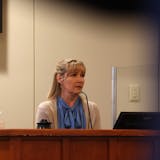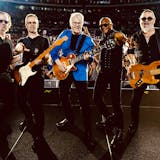Aaron Collins is standing in his bathroom, holding a white mask to his face while stretching its straps to the back of his head.
Here in the "lab" at his Minneapolis home, Collins is launching experiment No. 520 — the latest installment in his 18-month quest to help people use masks for better protection against COVID-19.
Just a few minutes earlier, Collins turned off a machine whirring like an air compressor that's perched at the edge of his bathroom sink. A clear tube leads from the mask he's wearing to a separate piece of scientific equipment sitting on the window sill.
Collins, 37, points excitedly to the screen on his laptop where a squiggly line has suddenly fallen like a rock.
"This is really a high-performing mask," he says on this mid-February afternoon, wearing a red-and-black checked shirt that's like many he wears on his YouTube channel.
Before the big drop, the bumpy line on the computer screen illustrated the high concentration of sodium chloride particles, which were pumped throughout the bathroom by the aerosol generator near the sink.
As they should with good masks, readings from the machine by the window — called a particle counter — plunged once Collins fit the mask tightly to his boyish face.
Next, Collins enters the results into a spreadsheet that he freely shares online — a gold star issued by the self-described "mask nerd."



